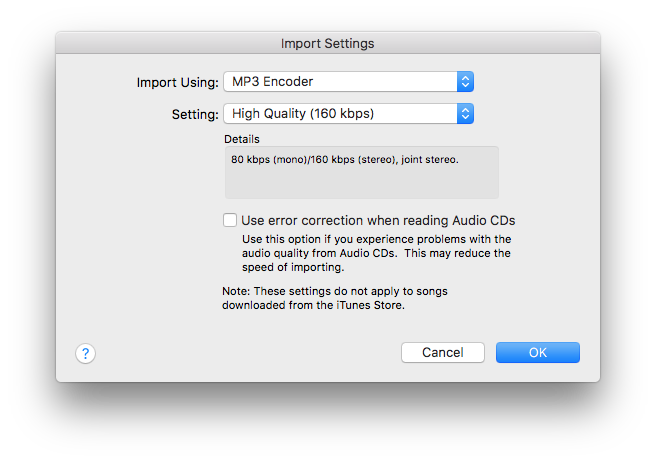
- #ITUNES MP3 ENCODER 320 KBPS#
- #ITUNES MP3 ENCODER UPDATE#
- #ITUNES MP3 ENCODER PATCH#
- #ITUNES MP3 ENCODER ANDROID#
The MP3 encoder does not support the following formats defined by the standard. The MP3 encoder also supports the following formats. The MP3 encoder supports the standard with some exceptions, as well as some additional formats, as described below. The MPEG-1 and MPEG-2 standard defines 252 layer 3 audio formats. It does not support 32-bit floating point input.

The encoder supports only 16-bit integer PCM input. Set the following attributes on the input media type. This attribute contains the 12 bytes of the MPEGLAYER3WAVEFORMAT structure that follow the wfx member of that structure.Īlternatively, you can fill in an MPEGLAYER3WAVEFORMAT structure and call MFInitMediaTypeFromWaveFormatEx to convert the structure to a Media Foundation media type. Use this attribute to specify the encoded bit rate.
#ITUNES MP3 ENCODER 320 KBPS#
The default bit rates are 128 Kbps for mono and 320 Kbps for stereo. Attributeīit rate of the encoded MP3 stream, in bytes per second. Set the following attributes on the output media type. The output type must be set before the input type. The MP3 encoder supports the following media types. Right-click the file you wish to convert from your track list and choose 'Send to->Format Converter.' In the Converter window drop the 'encode as' arrow and choose AAC, and in 'encoding profile' choose High Quality (this was the box in the converter settings we put the options for an iTunes Plus-style encode of CVBR 256k). The class identifier (CLSID) of the MP3 encoder is CLSID_MP3ACMCodecWrapper, defined in the header file wmcodecdsp.h. If you wish to locate the MP3 file on your hard drive, right-click the file in the library and choose Show in Windows Explorer, or Show in Finder on the Mac.The Microsoft Media Foundation MP3 audio encoder is a Media Foundation Transform (MFT) that encodes MPEG-1 layer 3 (MP3) audio.When you click on your Music Library, you should see that the tracks have been added.When the tracks have all been imported, a small green checkmark appears next to each file.Importing the CD means converting each song to an MP3 audio file. iTunes will now import each song on the audio CD.You will be asked if you would like to import the CD into your iTunes library.After scanning the CD, iTunes will display the track or tracks found on the CD.This subdued support for AAC files is since it is newer.
#ITUNES MP3 ENCODER ANDROID#
The AAC format may not necessarily play on every device, especially the Android and Windows devices. iTunes and Apple Music users, however, prefer the AAC files. Insert the audio CD into your CD-ROM drive. MP3 files can play in pretty much any device and operating system, giving it more popularity than AAC files.


Click OK, and then OK again to close the Preferences window. You can also choose between Good, High, Higher, or Custom for the quality setting.

#ITUNES MP3 ENCODER PATCH#
Mike Cheng started it as a patch against the 8hz-MP3 encoder sources. Latest LAME release: v3.100 (October 2017) LAME development started around mid-1998. Ingredientsġ – Apple’s iTunes program (current version as of this post 8.0.2) – download hereġ – Any Audio CD that is playable in a standard CD player Directions LAME is a high quality MPEG Audio Layer III (MP3) encoder licensed under the LGPL.
#ITUNES MP3 ENCODER UPDATE#
UPDATE – Watch the updated version using iTunes 12.


 0 kommentar(er)
0 kommentar(er)
